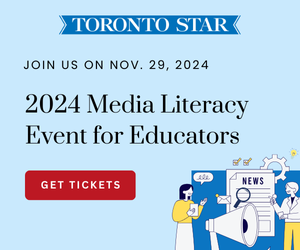
Last winter, more than 5,600 Canadians ended up in the hospital with an injury from hockey, skiing or another winter sport.
That information comes from a new report by the Canadian Institute for Health Information.
Most of the injuries were from skiing and snowboarding. More than 2,300 Canadians went to the hospital after they had an accident in either of those sports.
Hockey (1,114 injuries) and snowmobiling (1,126) were next on the list of injury-causing sports.
Almost 900 people ended up in the hospital because they hurt themselves ice skating, and 171 people because they had an accident while they were tobogganing.
Half of all hockey injuries and about a third of skiing and snowboarding injuries happened to kids between the ages of 10 and 19. Most (80 per cent) of those kids were boys.
Safe Kids Canada is a group that teaches parents how to keep their kids safe. They say that nearly half of all skiing and snowboarding injuries could be prevented if people wore helmets.
The group also recommends helmets for hockey, skating and tobogganing.
CURRICULUM CONNECTIONS
By Kathleen Tilly
Writing/Discussion Prompt
While helmets are recommended for winter sports, such as hockey, skating and tobogganing, they are not required.
Do you think wearing a helmet should be made into a law? Why or why not?
Reading Prompt: Making inferences/interpreting texts
The article states, “Half of all hockey injuries and about a third of skiing and snowboarding injuries happened to kids between the ages of 10 and 19. Most (80 per cent) of those kids were boys.”
Why do you think 80% of those kids, ages 10 – 19, were boys?
Why do you think the journalist chose to include this information in the article?
Primary
Make inferences about texts using stated and implied ideas from the texts as evidence (OME, Reading: 1.5).
Junior
Use stated and implied ideas in texts to make inferences and construct meaning (OME, Reading: 1.5).
Intermediate
Develop and explain interpretations of increasingly complex or difficult texts using stated and implied ideas from the texts to support their interpretations (OME, Reading: 1.5).
Grammar Feature: Writing numbers in different ways
In this article, numbers are shown in several different ways.
Find all of the numbers (or words related to numbers). How and why are they written differently?







